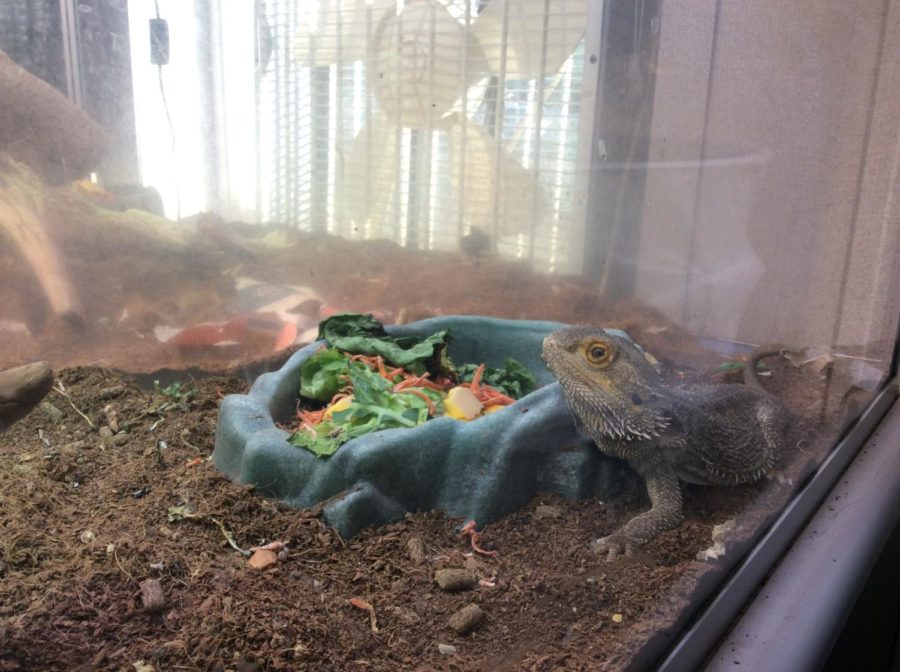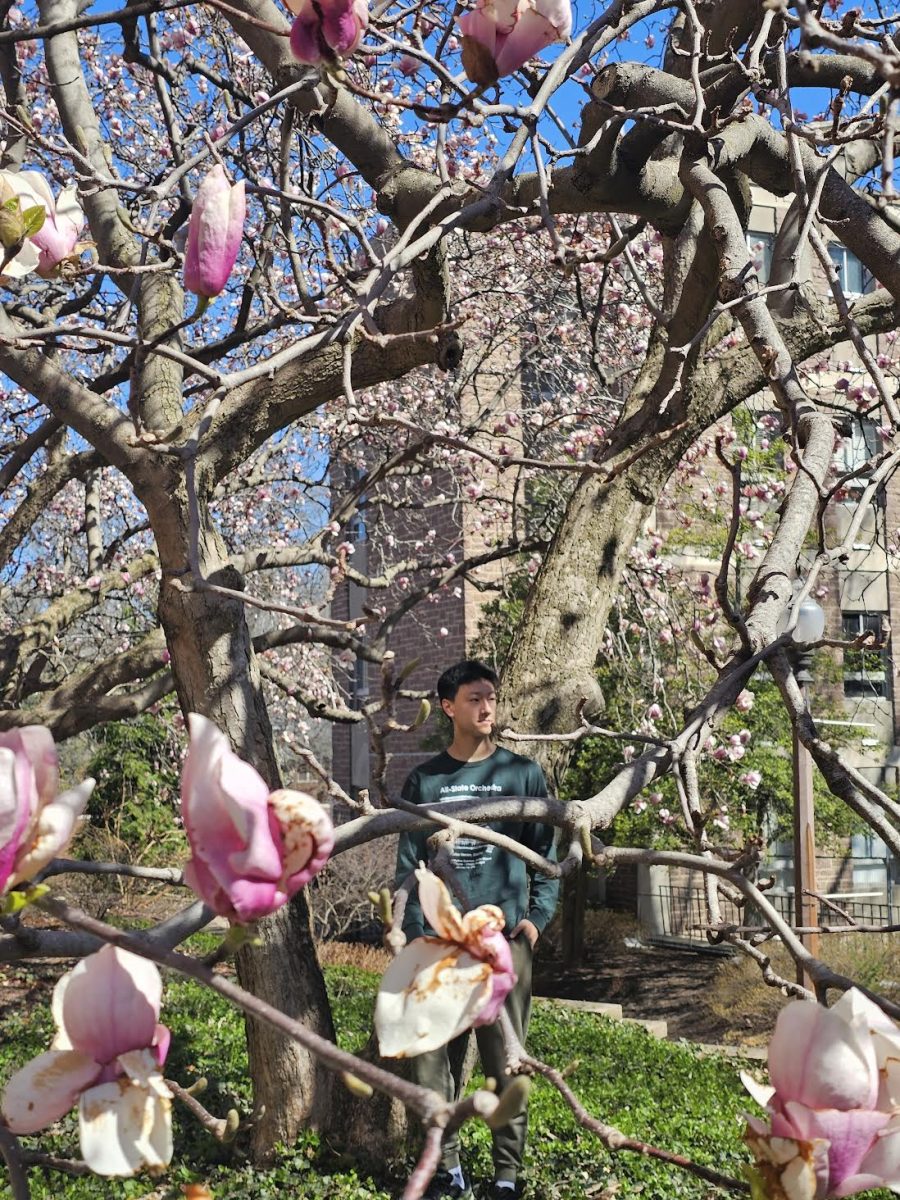Bearded dragons, axolotls, red-tailed boas and corn snakes are a few of the many animals in the temporary trailers of Ladue High School. At first glance, these animals may seem like mere classroom pets. However, they are more than just for show.
A wide variety of classes ranging from environmental science to oceanography incorporate these animals into the class curriculum. According to Allen Weltig, a science teacher at the high school, these animals demonstrate certain ideas and help engage students with topics that are covered in science class.
“When we talk about ecology, we use the axolotls as examples, as they are endangered species. We also use bearded dragons as examples of animal behaviors,” Weltig said.
Students can make their own observations about the organisms and exercise their scientific processing skills. For sophomore Lily Tung, the physical, live models of organisms are more engaging than the passages that students read in books.
“Having a 3-D model or object allows students to see and understand what they are learning better,” Tung said. “Sometimes, it’s hard to visualize certain concepts.”
These animals serve as paragons of the written texts students read in class. In addition, they provide an opportunity that is not typically offered at the high school.
“Having organisms other than humans around us reminds us of our connected place in nature,” Weltig said. “That quiet, peaceful, non-human interaction gives students a psychological peace, a serenity that isn’t there otherwise.”
Although the animals enhance understanding, they must select organisms that do not disturb students.
“It will mainly depend on the the type of animal,” junior Alice Breternitz said. “While having a pet will help students have some more hands on learning or experiments, it should be an animal that isn’t very active or very loud so that it does not distract the students.”
In addition, these animals come with a need for daily maintenance and care. Rules for student conduct with these animals must also be set to ensure proper animal treatment.
“The only caution I have is that students need to understand the respect to give those animals,” Weltig said. “If you set those boundaries up front and reinforce them as you go on, I think the benefits far outweigh any risk to the animals or the students, or the time or expense or anything.”
Although there are several extraneous tasks associated with these animals, their presence allows students to break out of the all-human environment at school. Students can interact with these animals and discover their connection to other organisms and the natural world, creating an experience that awakens human awareness.
“The connection to animals is essential to our connection to the world,” Weltig said.



![A client poses for a photo. Although Hannah Hiken (12) enjoys painting nails for others, she prefers to have control of her own artistic freedom. “I do [nails] on myself a lot. I think that's what I really enjoy most,” Hiken said. “Doing it on myself, because I can choose everything I want to do.”
Photo courtesy of Hannah Hiken](https://laduepublications.com/wp-content/uploads/2025/05/IMG_1740-1200x986.jpeg)
![Duckham spends large amounts of her free time reading. Dealing with fewer classes this year, Duckham’s bookshelf at home has seen more use. “I call every book my favorite, but not truly every book [is]. I wrote my dissertation on Herman Melville, so I guess I'd have to say Moby Dick, is definitely one of my all time favorites,” Duckham said. “I really do love both British and American novelists of the 19th century. I tend to prefer nonfiction over fiction. For some reason, I think there's so many great non fiction writers, and I love the whole idea of something being true.
(Photo Courtesy of Janet Duckham)](https://laduepublications.com/wp-content/uploads/2025/05/IMG_6605-1200x900.jpeg)


![ABOVE: Duncan Kitchen (10) plucks the strings of his guitar at his home. Duncan’s older brother inspired him to start playing the guitar two years ago. “On any given day [in Alaska], you could walk up the mountain start a campfire [and] play guitar,” Duncan said. (Photos by Vincent Hsiao)](https://laduepublications.com/wp-content/uploads/2025/04/Hsiao_20250325_DuncanKitchen_010-1200x839.jpg)


